The Lighthouse Route (Ruta de los Faros) is a network of nearly 200 kilometers of stunning trails, divided into about eight stages of approximately 25 kilometers each. It follows the Costa da Morte from Malpica to Finisterre. While the route is designed for walking or even mountain biking, we suggest exploring this route by car, trying to follow the road closest to the coastline. This way, the sea will accompany you along the journey, offering unparalleled views of dramatic cliffs.
You’ll have the chance to stop in charming Galician fishing villages rich in tradition, visit lighthouses steeped in history, and relax on beaches so beautiful you might never want to leave. In essence, it’s kilometers of wild nature, tradition, and culture, starting from the lovely port of Malpica and ending at the lighthouse of the world’s end—Finisterre—where all routes of the Camino de Santiago converge.
Itinerary for the Lighthouse Route
From Malpica to Finisterre, we will cover this unique route of the Lighthouse Way by car in five sections, allowing you to complete it in about five days. Shall we begin?
Malpica, 100% seafaring tradition
We start the Ruta dos Faros in Malpica, a fishing village that has been weathered by the beating of the waves against the breakwater of the port. A port that once served as a base for whaling and today is still in full operation. It will be in this first stop where we will enjoy the beach of Area Maior, the hermitage and the viewpoint of San Adrián. From here we will see the Sisargas Islands, home to the first of the lighthouses on our route since 1919. Before leaving, we will pass by the beach of Beo, stopping to see its cross, the beach of Seiruga and continue to Punta Nariga. Here we find the second lighthouse of this route, surrounded by rocks carved by the sea and the wind, creating a breathtaking and fascinating landscape.
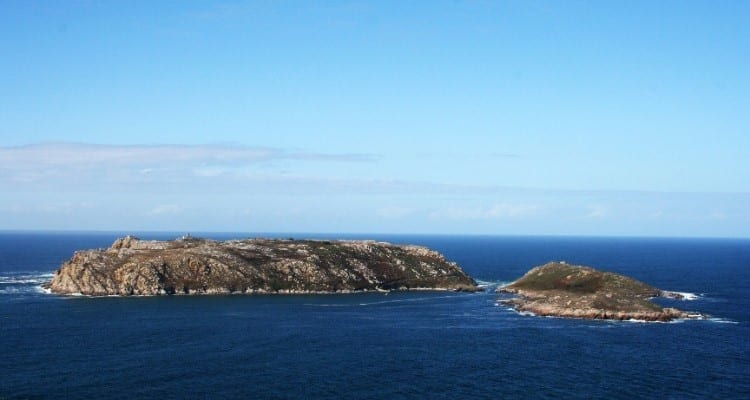
Sisargas Islands
From Niñons to Ponteceso with the sea as the protagonist
In this part of the trip we will stop in many places that will be difficult to forget because of their peculiarity. The Port of Santamariña is one of them, as it offers us a beautiful view of Punta Nariga. Although the most significant thing that we are going to see will be the houses of the village Roncudo, where the construction is adapted to the hardness of the zone. Where the sea does not forgive.
In this area we will find the third of the lighthouses crowning a projection of grey rock where the sea lashes mercilessly producing a deafening noise, hoarse, which gives its name to this lighthouse, Roncudo. There will be several beaches where we will be able to stop: from the Osmo, from the Ermida, etc. Impossible not to stop to see a Pedra da Serpente, a unique vestige in Europe, belonging to the Roman period in which the pagan and the Christian go hand in hand, and rio Covo. And before continuing our way, a stop in Ponteceso, to see its bridge over the river Anllóns. The manor where the galician poet Eduardo Pondal was born.
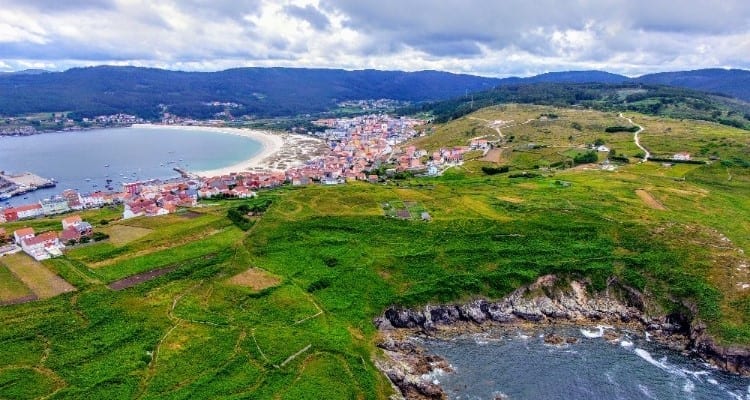
View of Laxe
From Laxe to Arou, unique ecosystems and a lot of history
Once we leave Ponteceso, we will turn inland to discover two unique archaeological sites: the castro A Cibda de Borneiro, inhabited between the 6th century B.C. and 1st century A.D. and discovered in 1924 by Isidro Parga Pondal and Dolmen of Dombate, a jewel of megalithic art that surprises for its grandeur and its magnificent state of preservation. We will also be able to visit the interpretation centre. From there, to have one of the best views of the Atlantic Ocean of this Ruta dos Faros, we will go up to Monte Castelo and Monte Insua where the lighthouse of Laxe is. Here we find the sculpture ‘A Espera’, a tribute to all those women and children who wait patiently on land for their fathers, sons, grandsons, sailor husbands.
Its location is privileged, the infinite ocean to the left, the Laxe estuary to the right, a spectacle for the senses. A visit to the beach of crystals is a must, where the ocean returned the crystals of different bottles, that was a landfill, turned into small tears of colors. The lagoon and the beach of Traba give us a peculiar ecosystem with the dunes as protagonists on the beach, and a walkway in the lagoon from which to contemplate the flora and fauna of the area. Leaving Arou we must not miss the opportunity to stop at the viewpoint of Lobeiras.
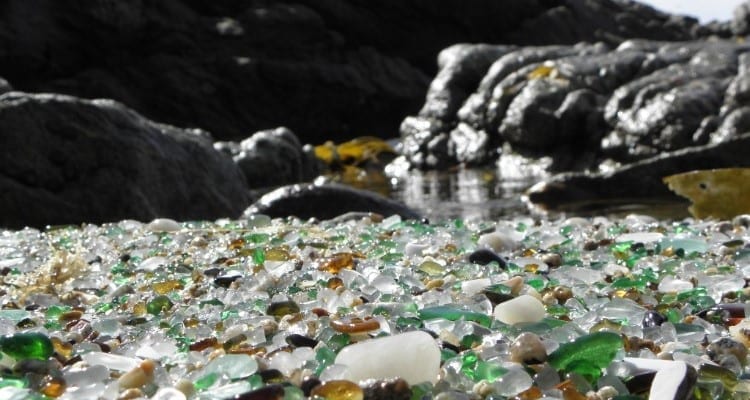
Beach of the crystals
From Camariñas to Muxía, pure Costa da Morte
In Camariñas we find the lighthouse of Cabo Vilán, the first electric lighthouse in Spain, where we can visit the Interpretation Centre of shipwrecks, lighthouses and maritime signals, and the Faro Vello, which worked with steam and still remains. The road that takes us through this area is pure Costa da Morte. A rough road with views of those vertiginous cliffs, where the stone is our companion, showing us impossible sculptures forged by the waves, the wind and the weather. We arrived at an obligatory stop, Punta Boi, where we found the known as Cemetery of the English.
Here, in the middle of the 19th century, three shipwrecks occurred, leaving this part of the Costa da Morte cursed. In 1883 the ‘Iris Hull’ left Cardiff, never to return. In 1890 the ‘Serpent’ left Plymouth for Sierra Leone but a storm smashed the ship against the rocks of Punta Boi and she did not reach her destination. Finally, in 1893 the ‘Trinacria’, which left Glasgow for Gibraltar, never reached its destination. Here, in this place as beautiful as tragic is located this cemetery, a tribute to those British subjects who left their lives on the Galician coast.
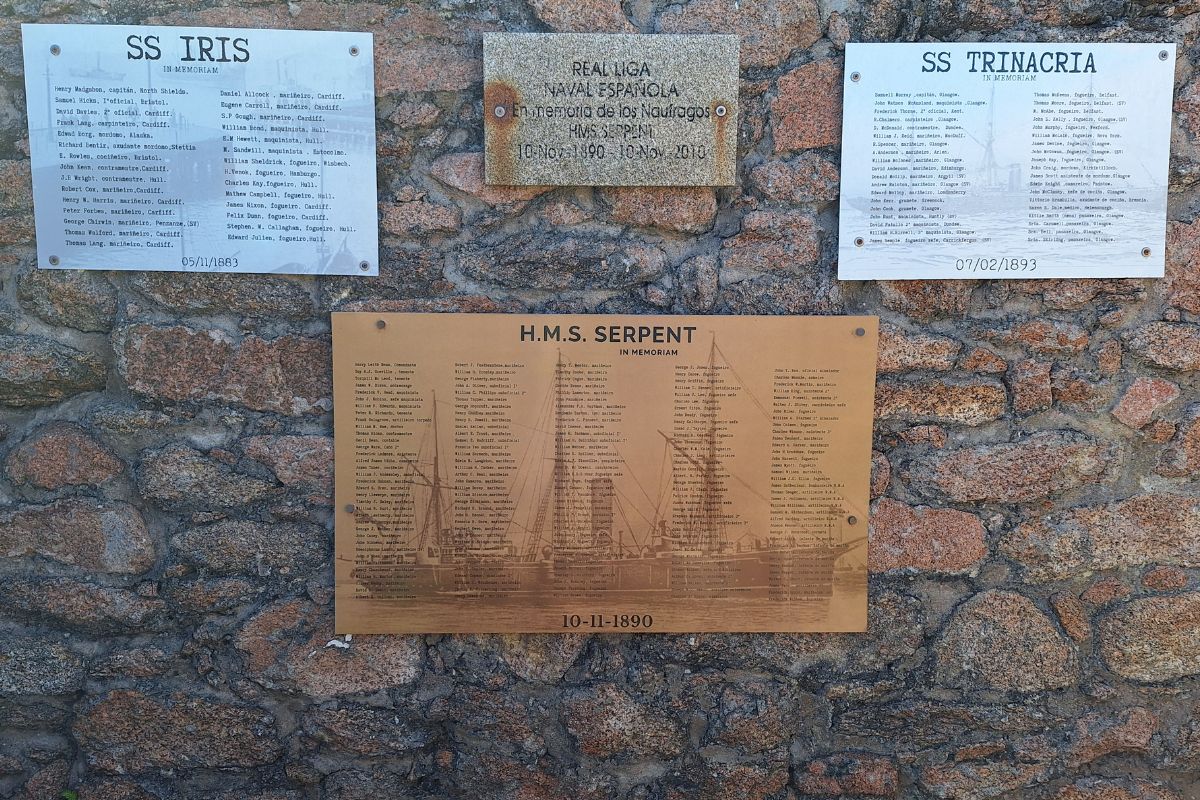
The English Cemetery pays tribute to all the shipwrecks that occurred in the area
From Muxía to Finisterre, where the Sun sets for the last time
And we arrived at Muxía. If Santander is the bride of the sea, this emblematic Galician city is the bride of the wind. The port, the one that feeds the locals, welcomes us, the one that in 2002 was hit by the disaster of the ‘Prestige‘ (a promenade has been created in memoriam) welcomes us, but we are going to continue on our way to the Sanctuary of Nuestra Señora de la Barca. We climb up the steep staircase to the Corpiño mountain. It’s worth the effort. Before us we have a panoramic view of Muxía, the Vilán Lighthouse, the sea, the green of the meadows… Our next stop is the Muxía lighthouse, whose location is privileged. A visual spectacle at dawn, at dusk, with the rough sea mercilessly shaking the rock. Impressive.
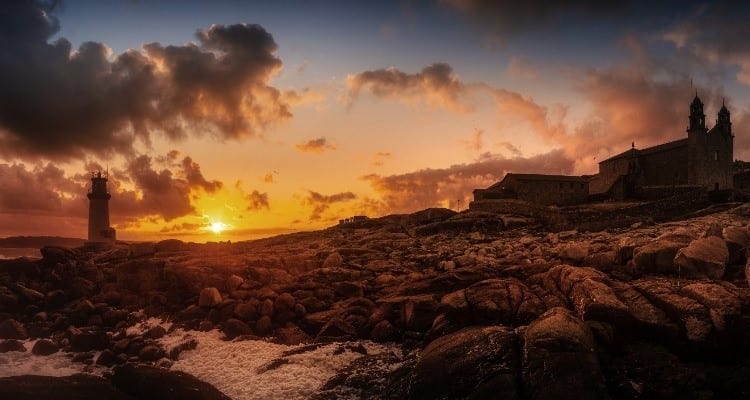
Sunset in Muxía
And before reaching the end of this route, we stop in Touriñán to see the Cape of the same name. A rocky place, with its two lighthouses, where you can contemplate when spring starts and summer ends. The last sunset on the European continent. And we arrive at the end, Cape Finisterre—the edge of the world and the final stop on the Camino de Santiago. A set formed by the octagonal lighthouse, the Cow of Fisterra (a warning siren) and the Semaphore, from where signals were sent to the warships since it was built in 1879. And how wonderful to say goodbye to this fantastic route with the Atlantic Ocean at our feet. Like a carpet of water and salt, with that smell that permeates everything, contrasting with the green of the meadows surrounding the lighthouse.
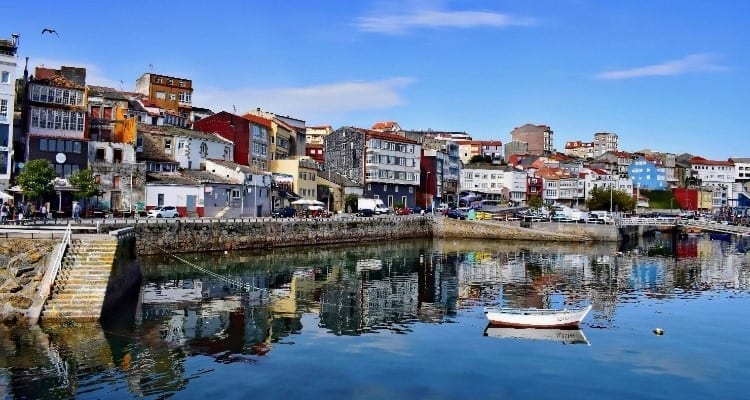
Port of Finisterre
A route full of sensations that we can not fail to enjoy. Fishing villages with a special charm, immense beaches, impossible cliffs, royal lighthouses, rocks that are art. Nature in its purest state or viewpoints that give us priceless views, are some of the incentives to consider doing the Lighthouse Route on a one-of-a-kind getaway in Galicia.

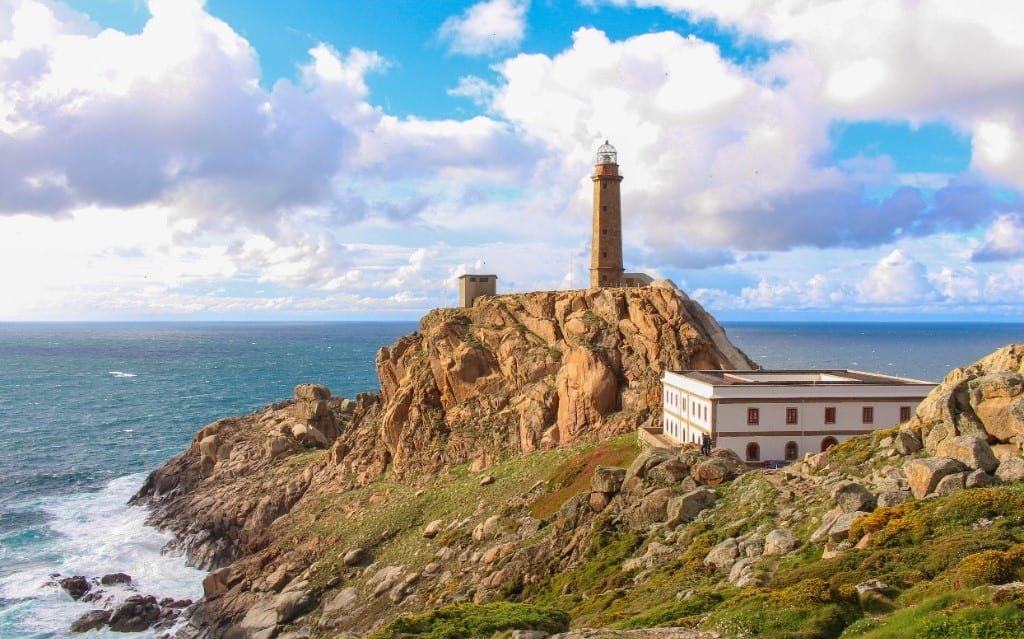










Is it possible to get driving directions for this route? I’ve been trying to do it on google maps for a trip in June and I can’t seem to figure out the route as described. Thanks!
Hi Jason,
thanks for reading our blog and contacting us. Yes, it is possible to create a route on Google Maps. Make sure you look for the correct locations. However, please note that for some locations, you will need to finish the route on foot.
Kind regards!